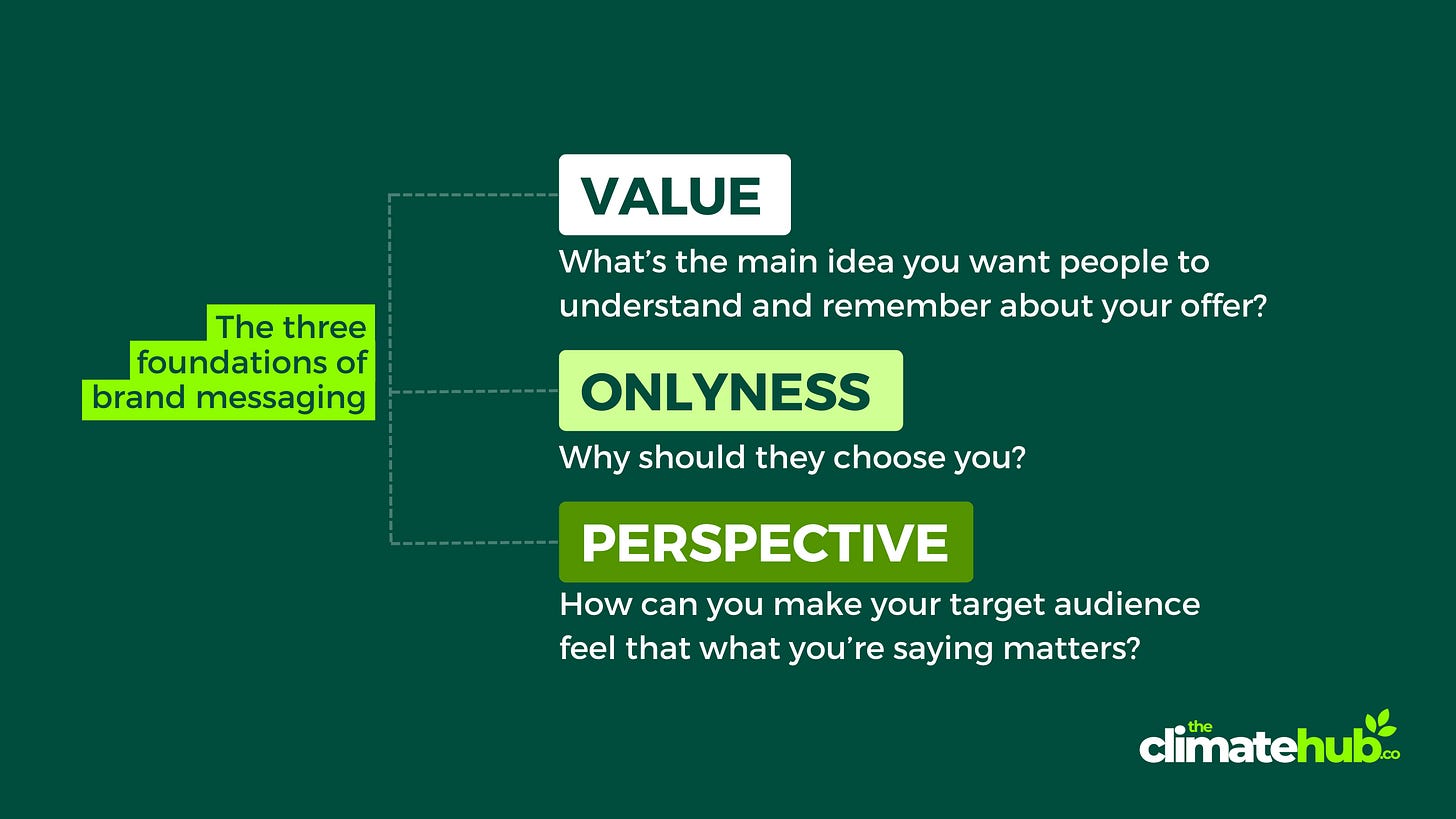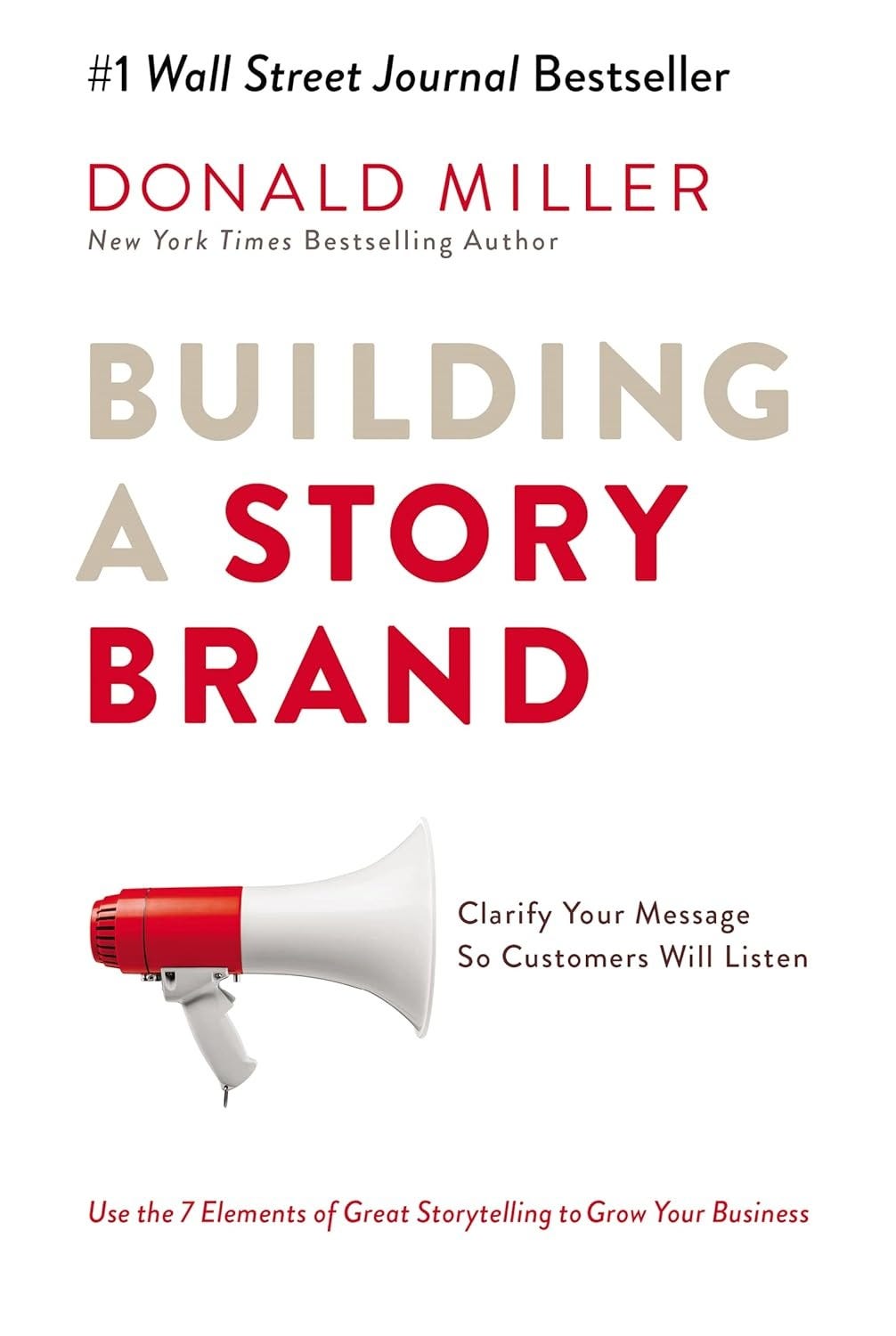Finding message-market-fit in climate tech
Is your messaging appealing to your customers?
Hello friends,
Too many climate tech brands go to market without evolving their core messaging beyond what’s in their pitch deck.
They take the same messaging, catchphrases, epithets, and stories they use with investors and prospective employees and parrot them to potential customers. This approach tends to fall flat.
Once a round of funding is locked in, the critical work of evaluating, refining, and defining your key messages, logic pillars, value proposition, and sales enablement material must begin.
How can climate tech brands craft messaging that appeals to buyers rather than investors?
While the big-picture process for finding message-market-fit is universal, it can be more difficult for those in climate tech, because:
Communicating the effectiveness and necessity of your solution without overwhelming or alienating is a unique challenge due to the complexity of both problem and solution.
Nascent technologies require education about the current state of the solution and a vision for its future potential.
There’s a need to balance commercial interests with broader ethical and greenwashing considerations.
Messaging must be agile to reflect the evolving regulatory environment and corporate sustainability trends.
So where do you start?
4 steps to message-market-fit
1 — Understand your audience.
Determine where your customers sit on the corporate climate maturity spectrum. Gather intel by running surveys and sitting in on sales calls. Get a read on their daily challenges and jobs to be done. Pay attention to the questions asked during webinars. Work with a copywriter who specializes in voice-of-customer research. Discover your customers’ hidden assumptions.
2 — Define your messaging.
There are three bases your messaging needs to cover.
Value
What questions are your customers asking? What pains will you address? Focus on clarity and consistency.
Onlyness
Why are you the right provider to solve this challenge? What is the value only you can provide? Focus on value and differentiation.
Perspective
What are your brand values? How can you talk about your offering in a way that resonates with your customers’ values and priorities? Focus on timeliness and relevance.
3 — Test and refine.
Test phrasing on sales calls. How do people react? Are they nodding their heads in agreement? Do they need to ask clarifying questions? When do potential buyers lean in to hear more?
4 — Monitor and adapt.
Your product will evolve and so will the needs of your target audience. You must continually meet their attention to stay relevant.
The importance of messaging that works can’t be overstated.
Many marketers focus on design to increase conversion rates. This is misguided. Compared to design, messaging has 2x the influence on conversion rates. The next time you update your website (ahem, bet you’re due!), don’t skip the critical work of first nailing down your messaging.
The takeaway?
Constantly refining and evolving your messaging is the most important marketing initiative you can participate in.
And that means…
Iterating your way through to find and maintain message-market-fit will be climate tech marketers’ ultimate task. It’s the only way to meet the attention of buyers and help them understand how your technology is better and why that matters.
The challenge ahead:
Messaging needs to be agile through the entire process — there is no such thing as “done.” And for those working with FOAK technologies, marketers mustn’t just join the conversation happening in customers’ heads, but also shape the conversation in the first place.
Educational resources
A fantastic resource on the most common pitfalls in climate tech messaging, and how to overcome them. Kudos to Kurve for this great resource!
A ‘story brand’ is not a brand with a captivating ‘humble garage’ origin story. A story brand tells a story, first and foremost, about your customers. This book is essential reading for marketers.





